I'm going to branch out a bit and talk about the USN as it exists today. It's a large and complex organization, made up of both uniformed servicemembers and civilians. The USN has, broadly speaking, four major combatant branches: surface warfare, aviation, submarines, and, in concert with the Marine Corps, amphibious warfare. Of course, these branches require a great deal of support, ranging from auxiliary ships to construction units to security personnel to medical teams to the command and intelligence services that tie it all together.
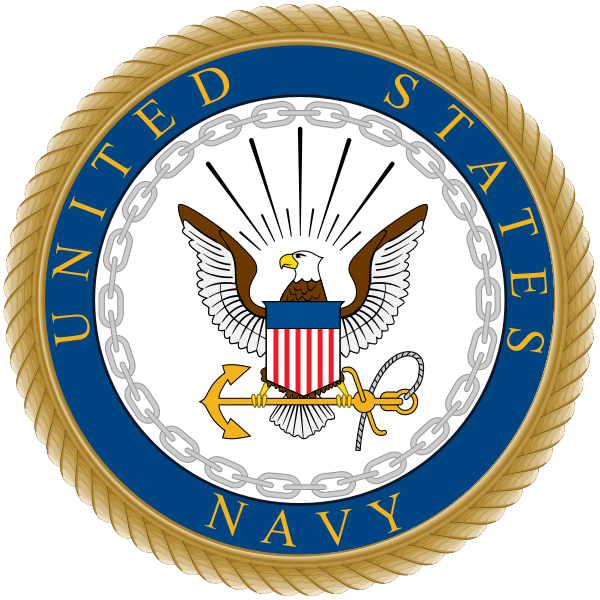
Ultimately, everything can be traced back to the President, as Commander-in-Chief of the armed forces. Authority flows down from him through the Secretary of Defense to the Secretary of the Navy, who is the head of the Department of the Navy, which includes both the Navy and the Marine Corps. The uniformed head of the Navy is the Chief of Naval Operations, while the Marine Corps is lead by the Commandant. However, neither of these men have any direct command authority over forces in the field. Their responsibility is to create and train forces, not to use them. Since the 1980s, that has been the job of the Unified Combatant Commanders, four-star generals or admirals who control all US military forces in a specific geographic area, known as a Unified Combatant Command (UCC)1 and who report directly to the Secretary of Defense. Ships, aircraft, and other military assets are assigned to each UCC as dictated by operational needs. Each geographic UCC has one or more numbered fleets, which provides command of all naval forces afloat in the region.
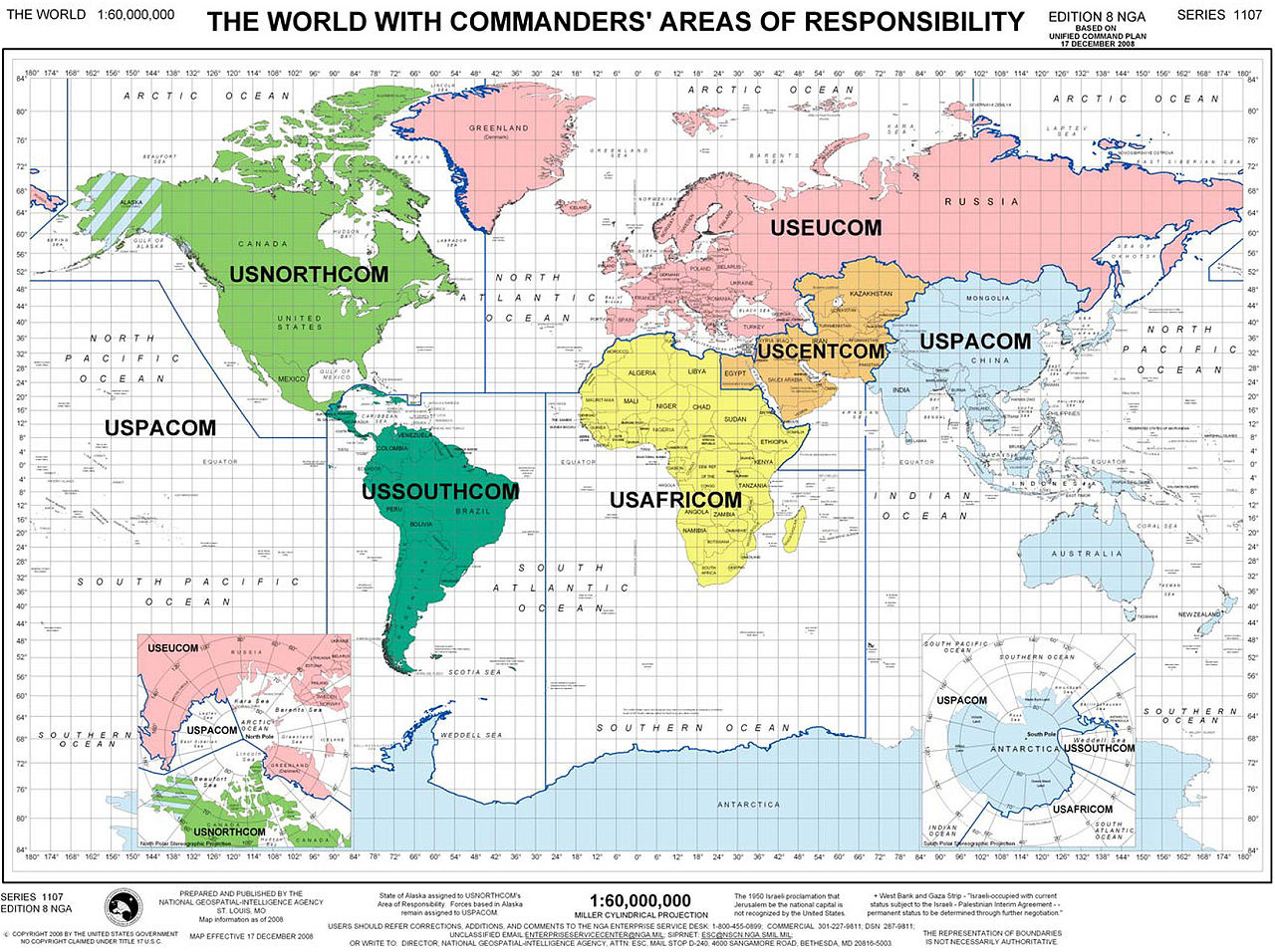
The areas of the UCCs
And with that very brief digression into the the bureaucratic nightmare that is the Department of Defense's org chart done, we can turn our attention to the basic combatant branches and what each of them does.
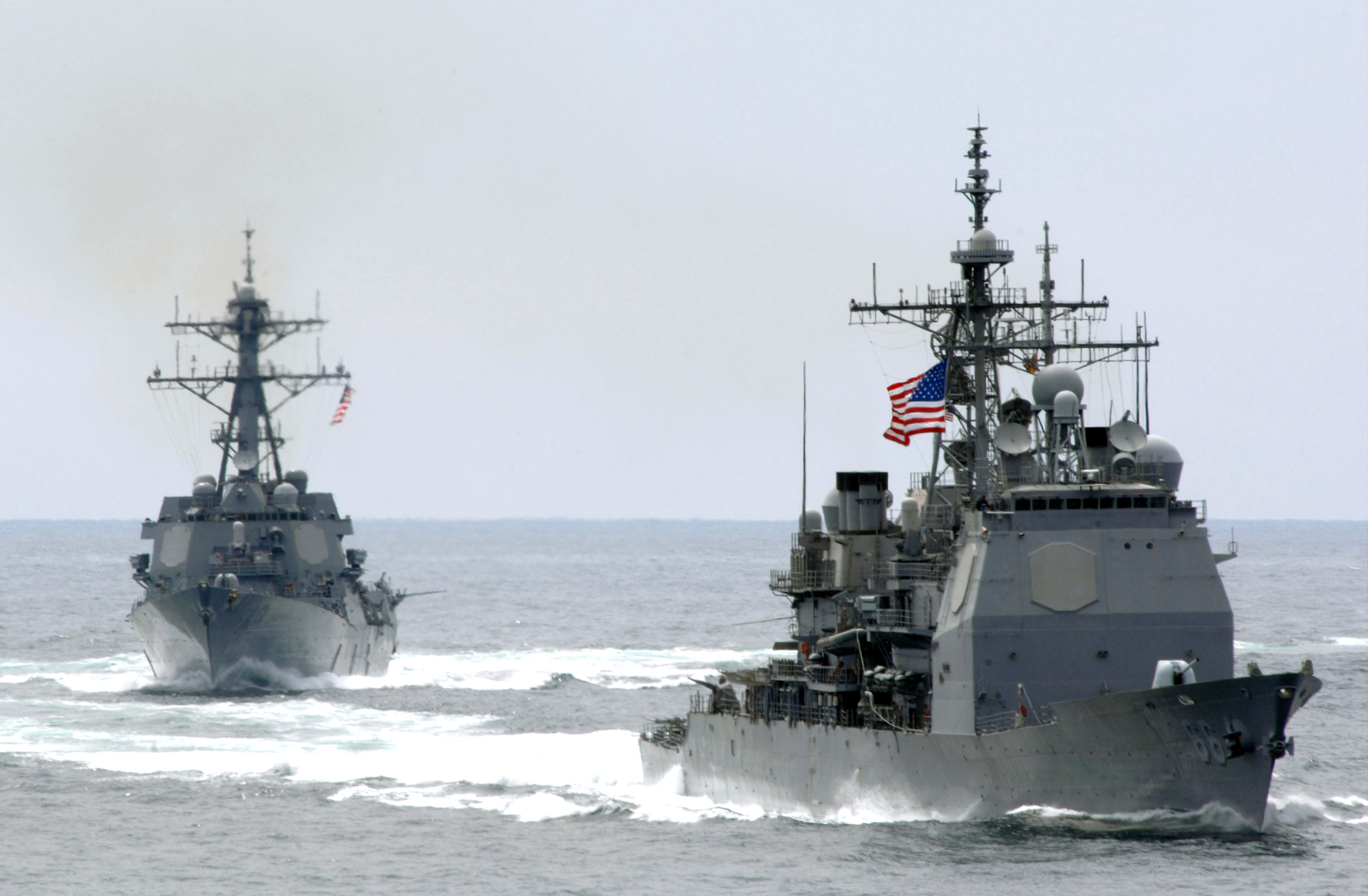
Arleigh Burke class destroyer Oscar Austin (left) and Ticonderoga class cruiser Hue City
The oldest and most fundamental of these branches is surface warfare. The Ticonderoga class cruisers and Arleigh Burke class destroyers that make up the backbone of this force are the most versatile vessels in the fleet. Their missions can be low-end tasks like showing the flag through port visits and hunting pirates or other low-level threats to maritime trade. They can be tasks like striking targets inland with Tomahawk missiles and searching ships for smuggled weapons. And if war were to break out with a major power, these roles would change to protecting other ships from air, sea, and missile threats. To give the ships so many options, they are equipped with the Aegis combat system and a battery of missile tubes which can handle Tomahawks, Standard and Sea Sparrow surface-to-air missiles, and VL-ASROC anti-submarine missiles, as well as a 5" gun or two and a number of smaller guns for self-defense.
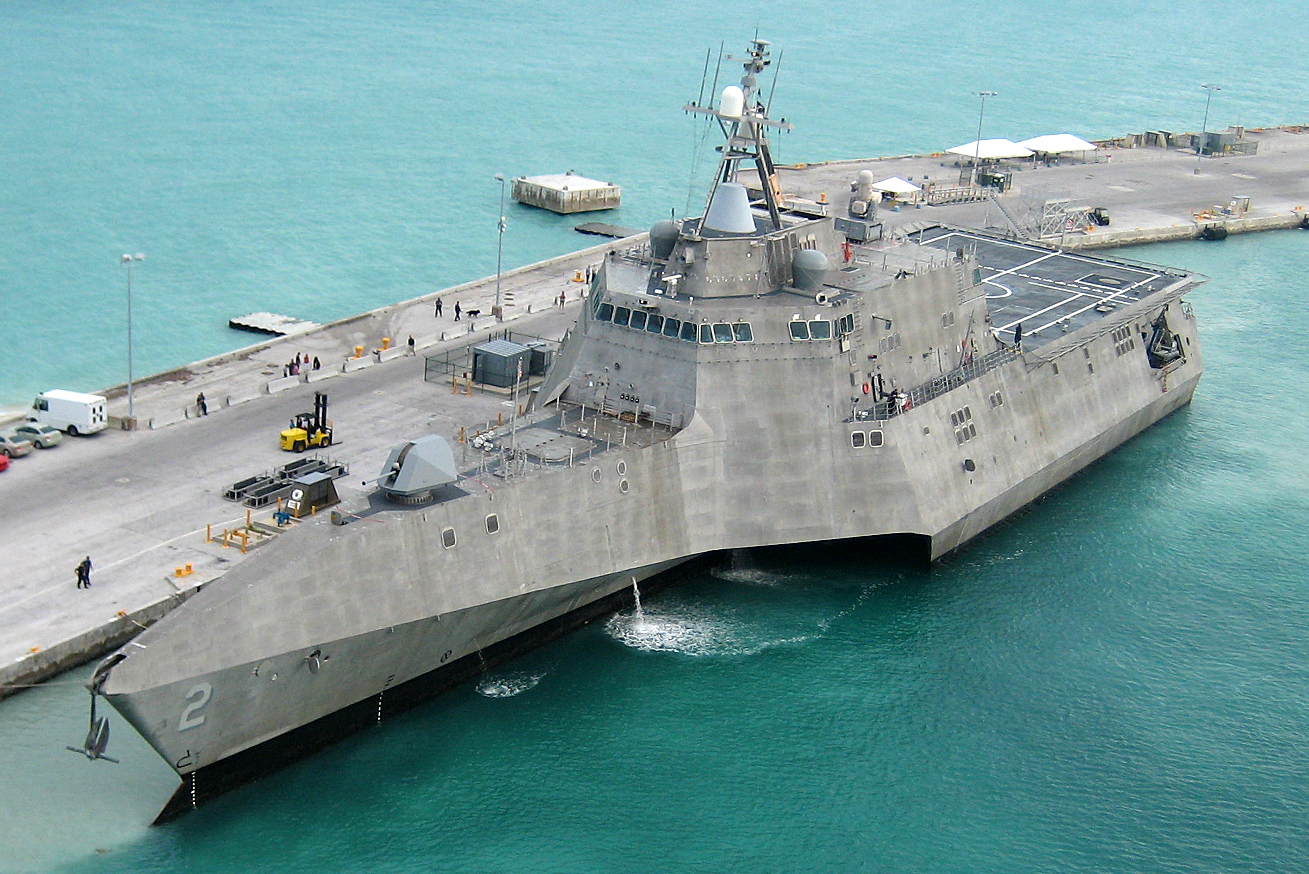
USS Independence (LCS-2)
The last decade has seen these vessels joined by ever-increasing numbers of Littoral Combat Ships (LCSs). The LCSs are intended to be a cheaper, low-end combatant specializing in warfare close to shore, and are armed with a 57mm gun, the Rolling Airframe Missile, and a variety of modules that can be switched out to give the LCS the capability to fight surface ships, hunt submarines, clear mines, and land troops. In practice, poor design decisions mean that even when the engines are working, the LCS is not the most useful ship ever built.2 They Navy has finally realized this, and in early 2020 announced the selection of a new ship for the role, the FFG(X). Based on an Italian design, the FFG(X) is a conventional frigate, with short-range SAMs and a good sonar suite. They're also looking at acquiring large numbers of unmanned surface vehicles, although it's unclear exactly how this will work in practice.
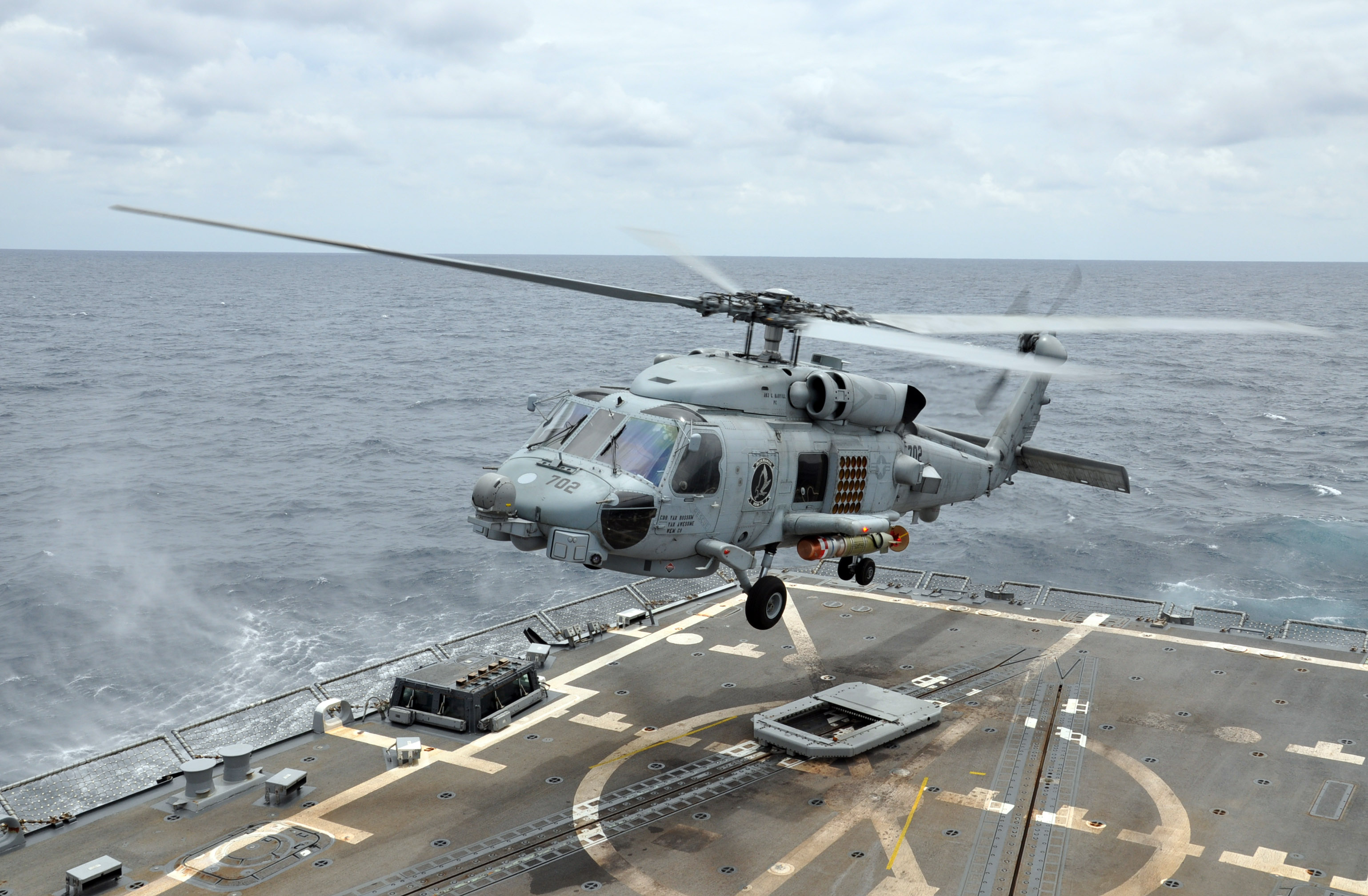
An MH-60R carrying a torpedo lands aboard destroyer Wayne E. Meyer
Nearly all of the vessels of the surface fleet carry at least one helicopter, which forms an important part of their armament. This helicopter, usually an MH-60R Seahawk, has sensors to locate and identify potential targets both on and below the sea's surface, and weapons to destroy them if necessary. Other helicopters move equipment between ships at sea, drop off boarding parties, pluck survivors out of the water, and even clear mines. But useful as helicopters are, the core of naval aviation remains with the carrier-based fixed-wing aircraft, flying from the nation's nuclear-powered carriers. 11 of these currently serve, 10 operational units of the Nimitz class, and the new Gerald R Ford. Each one carries around 74 aircraft, including 48 F/A-18E/F Super Hornet strike fighters,3 5 EA-18G Growler electronic warfare aircraft, 4-5 E-2 Hawkeye airborne radar planes, and a mix of helicopters. This is more airpower than most national air forces can muster, capable securing the skies over the fleet, hunting down enemy surface forces, and carrying the battle hundreds of miles inland. Even more importantly, it can be deployed anywhere on earth within a handful of days, without the diplomatic or logistical headaches of land basing.
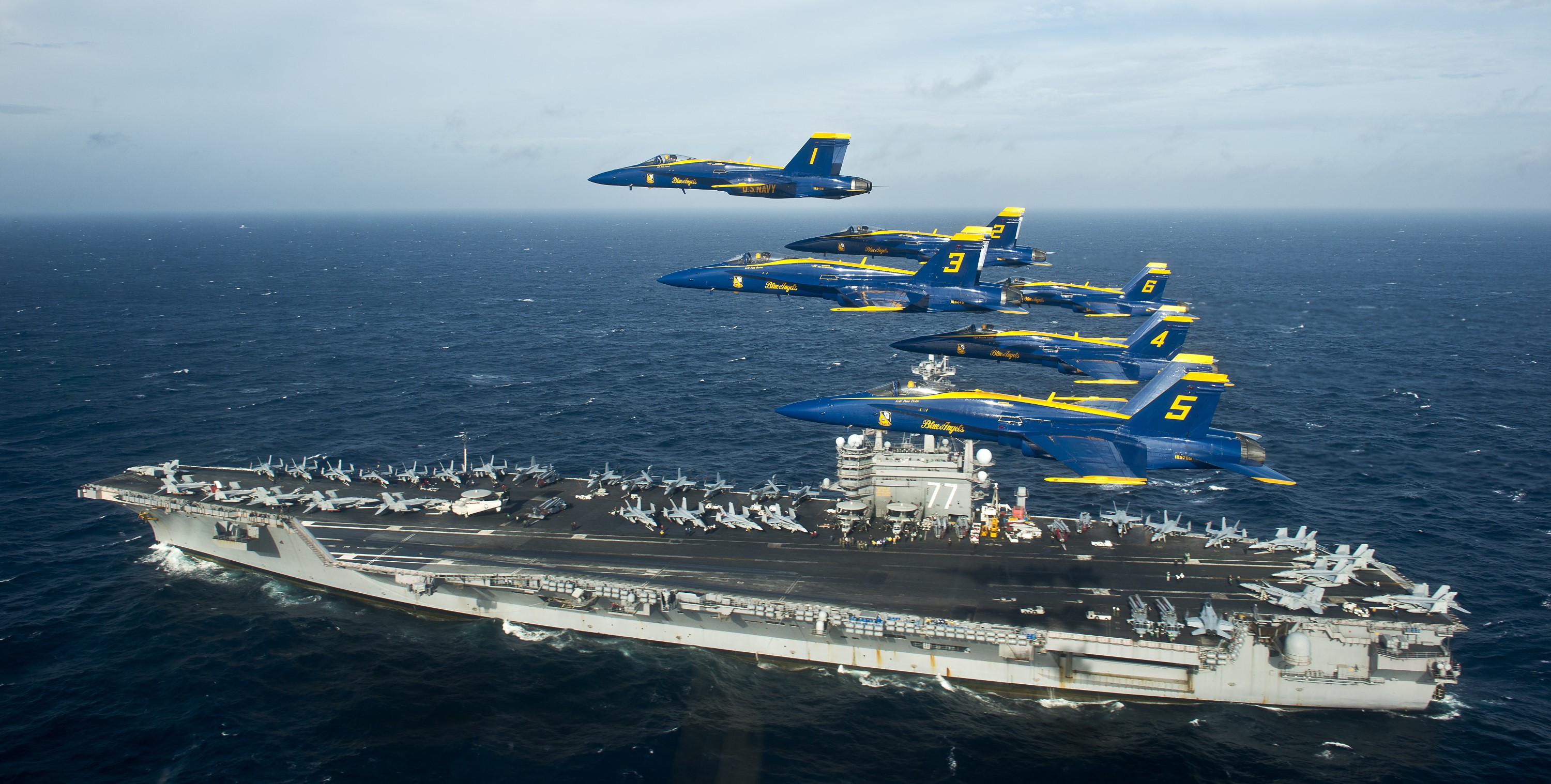
The Blue Angels fly over George H. W. Bush of the Nimitz class. Many of the carrier's aircraft are displayed on deck.
Not all naval aircraft operate from ships, though. The P-3 Orion and P-8 Poseidon are converted airliners that scour the surface of the sea for targets and hunt submarines initially located by SOSUS, a network of hydrophones on seabeds worldwide. They are backed up in this role by the MQ-4C Triton, a UAV designed to provide broad-area surveillance. Modified P-3s monitor the radio and radar emissions of potential enemies, while E-6 Mercurys serve as airborne command-and-control posts for all US nuclear forces. Other roles for shore-based aircraft range from carrying cargo to carriers and shore bases to training future pilots and even inspiring said future pilots in the first place.
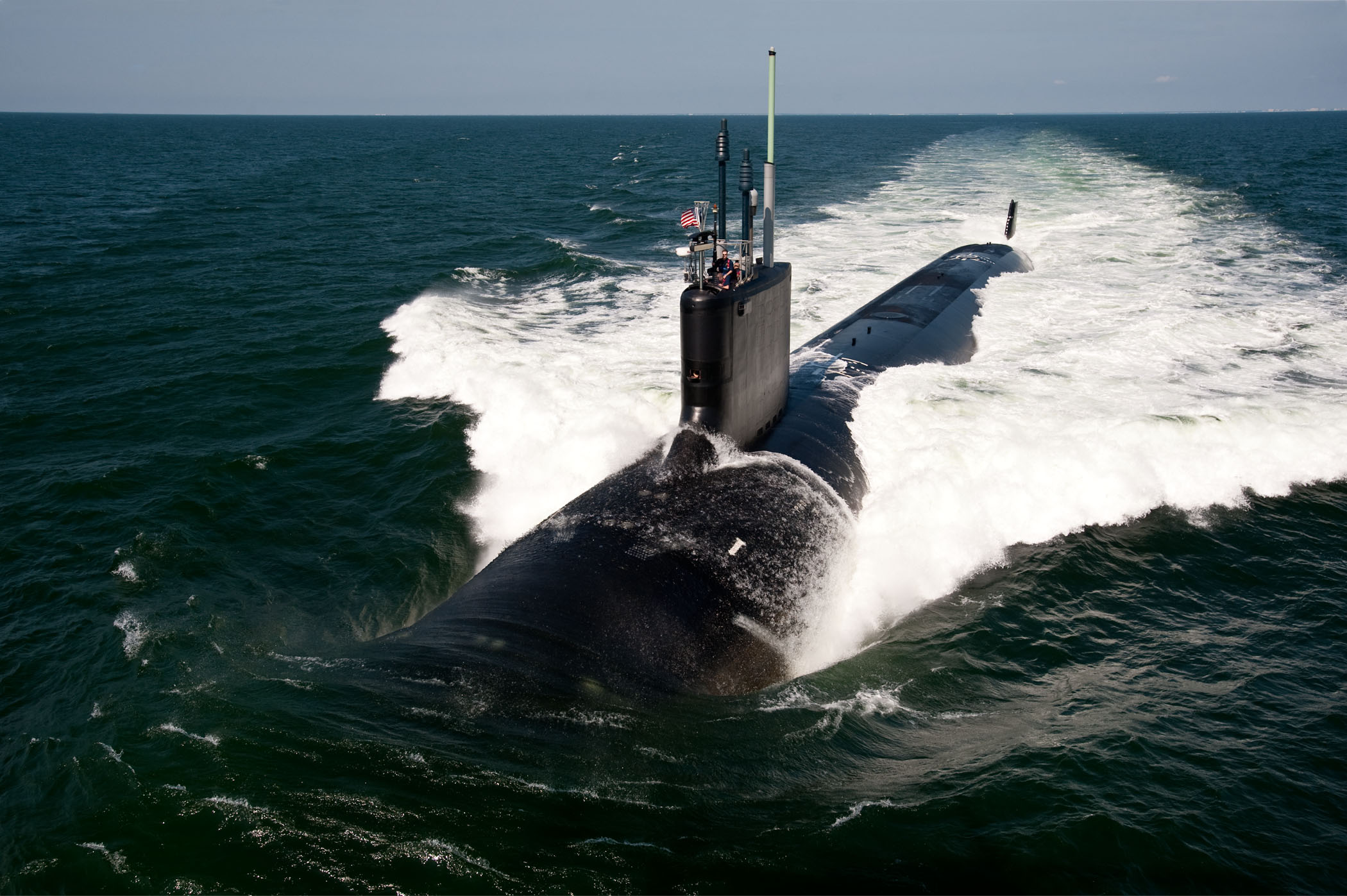
USS California of the Virginia class
If the Blue Angels are the public face of the navy, the submarines live up to their name of the silent service. More than 50 American nuclear attack submarines of the Los Angeles, Seawolf and Virginia classes prowl the oceans nearly undetectable by anyone. Their torpedoes and sensors make them arguably the most potent antishipping and antisubmarine platforms in the world, while Tomahawk missiles allow them to launch strikes on land targets that would otherwise be out of reach. Submarines are also ideal for gathering intelligence and supporting special operations in areas where our enemies would rather we didn't go. Even more important are the Ohio class ballistic missile submarines, several of which are always on patrol to provide the President with a reliable and survivable nuclear deterrent. These boats, and their predecessors, have done a great deal to keep the peace over the last half-century.
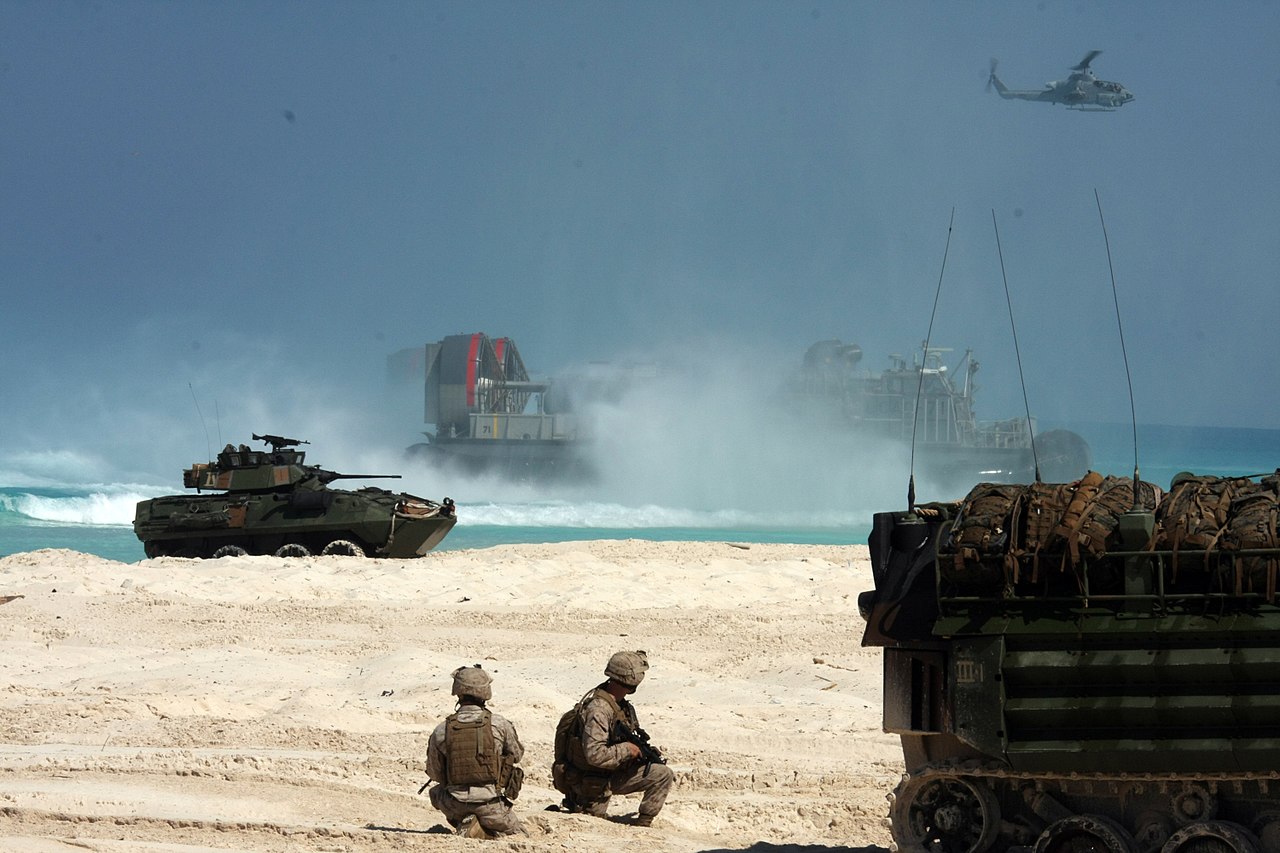
Marines come ashore during an exercise
But all of these forces have one serious limitation. While they may be able to rule the waves, they have limited ability to affect things ashore directly beyond simply blowing them up. This is often adequate, but when it isn't, amphibious forces are required. These are a partnership between the Navy and the Marine Corps, integrating ships, vehicles, sailors and Marines to place ground units ashore anywhere in the world and support them in missions ranging from disaster relief to high-intensity ground combat. While there is little chance that we'll ever see invasions on the massive scale of Tarawa or Normandy again, the ability to put a heavy infantry battalion ashore anywhere in the world and support it without the need for local basing or diplomatic permission is still a valuable capability.
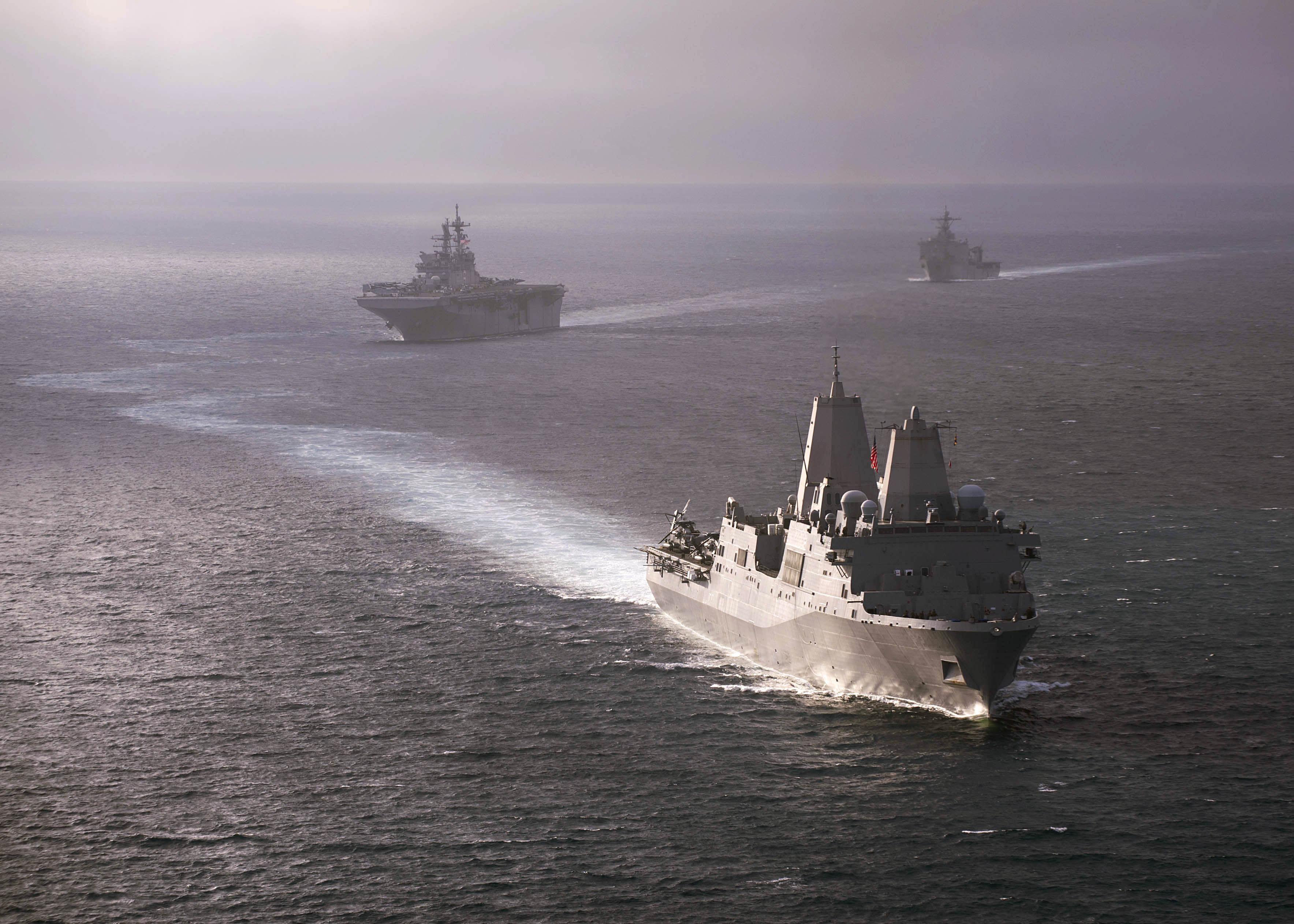
The America Amphibious Ready Group, lead by LPD San Diego
The operating element of the amphibious force is the so-called Amphibious Ready Group (ARG), several of which are forward-deployed at all times. The ARG's landing force is a Marine Expeditionary Unit, built around a reinforced battalion of Marine infantry, two dozen or so helicopters and airplanes, and a logistics element to keep those units in action.4 The MEU is usually carried by three ships, a helicopter carrier (LHD/LHA) of the Wasp or America classes, which transports the aviation units and some of the ground units; a landing ship dock (LSD) of the Whidbey Island or Harpers Ferry classes that is primarily responsible for cargo and vehicles; and a landing transport dock (LPD) of the San Antonio class that carries the rest of the ground troops. Troops can be sent ashore via the helicopters of the air combat element or by the landing craft of the ships.
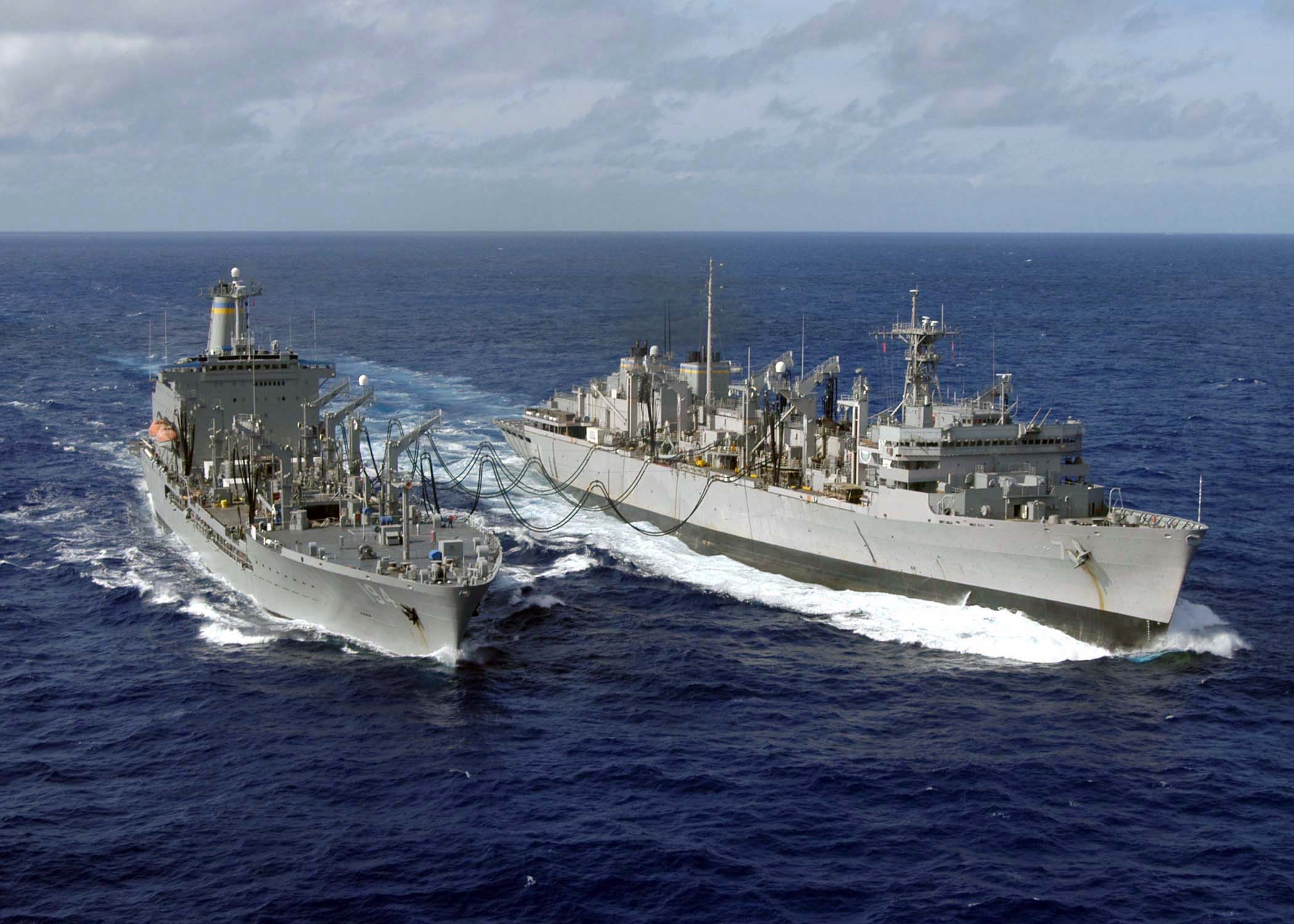
Fast support ship Rainier takes on fuel from oiler John Ericsson, both of MSC
But while the four combat branches are the most visible part of the Navy,5 they couldn't do their jobs without the support of dozens of other units. Most prominent are the auxiliary ships of Military Sealift Command (MSC), which operates everything from oilers and ammunition ships capable of replenishing warships on the high seas to hospital, salvage and survey ships that perform vital missions well away from the battle front. MSC also operates the maritime prepositioning ships, cargo vessels stationed in ports around the world, ready to steam to a crisis zone where they will meet up with troops flown in from the US. Not all of the auxiliaries are operated by MSC, though, the most prominent being the mine warfare forces that work to keep the sea lanes safe from an underappreciated threat.
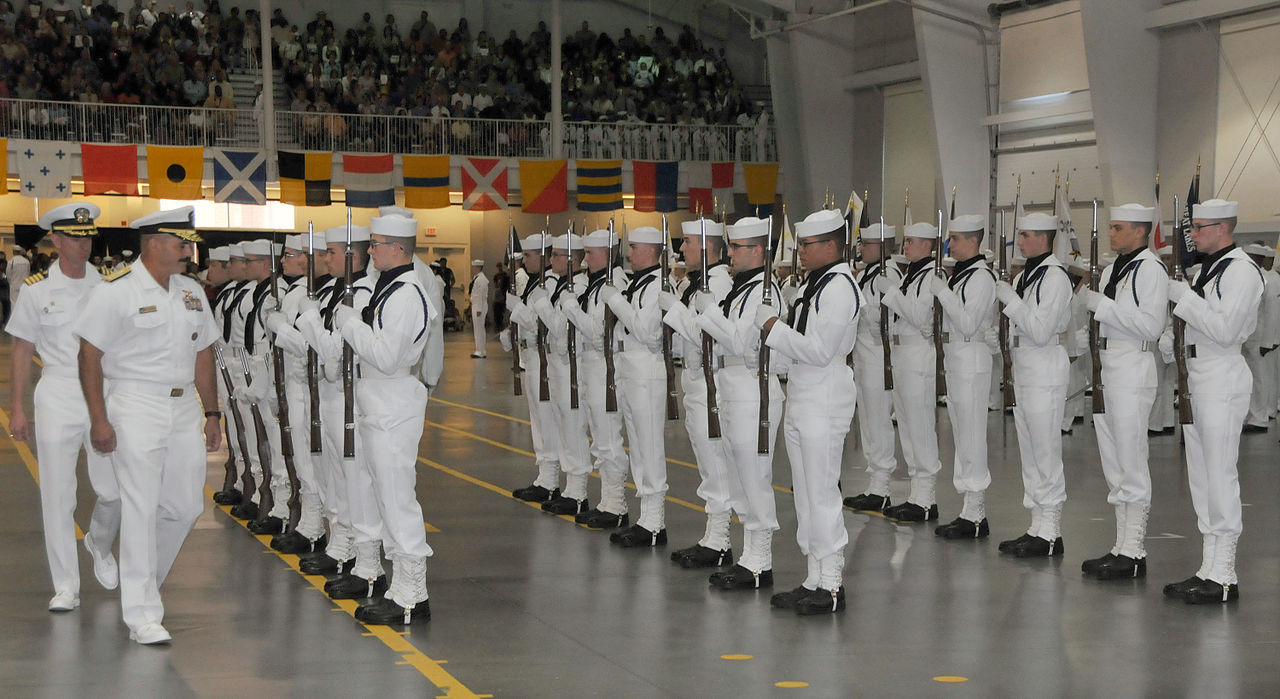
New sailors are inspected as they enter the Navy
But as important as support functions afloat are, even more vital is the vast network of shore facilities that do everything from training new recruits to procuring and providing supplies. A huge number of people, both in and out of uniform, work to develop, procure and test weapons and other equipment. The growing array of computerized equipment is protected by Fleet Cyber Command. Naval Expeditionary Combat Command controls units that might be deployed to other countries, including the famous Seabee construction units, the Coastal Riverine Force, which protects ships and facilities in harbors, rivers, and other areas of brown water, EOD teams and logistics units to run ports and move cargo ashore. Many of these units are manned by members of the US Navy Reserve, who work part-time for the Navy while holding down civilian jobs.
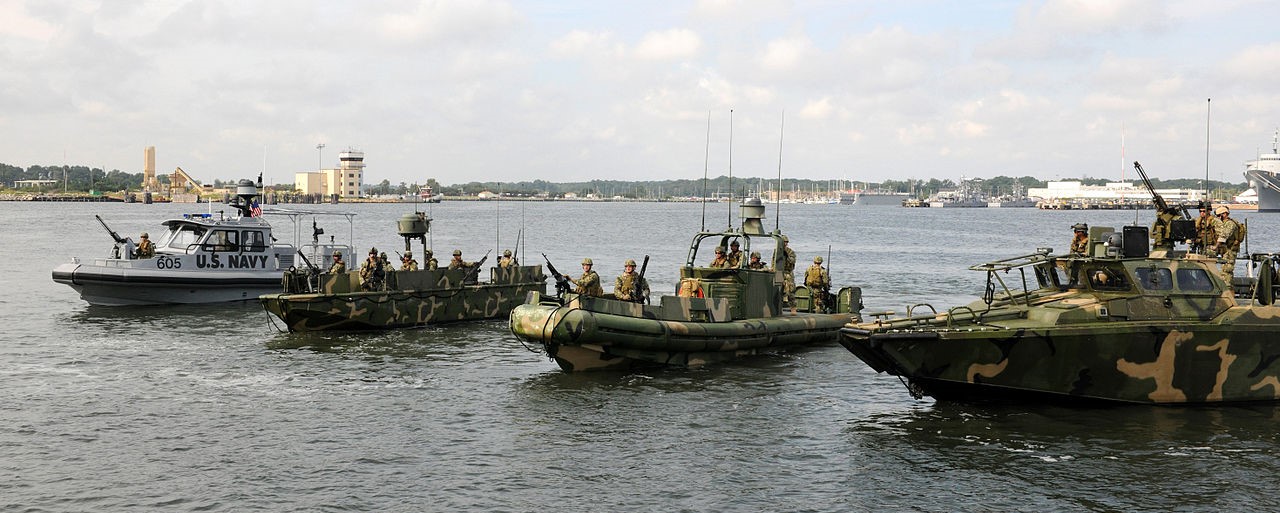
Boats of the Coastal Riverine Force
The US Navy has approximately 334,000 personnel in uniform on active duty, and another 101,000 in reserve, supported by 275,000 civilians, to say nothing of the Marine Corps.6 No organization of this scale, with 290 combat vessels and around 3,700 aircraft, could be described comprehensively in a single blog post, and I intend to follow this one with deeper looks at the various components of the USN and USMC.
1 There are actually six geographic UCCs, and four that have control of specific functions: Transportation, Special Operations, Cyber and Strategic (nuclear). The Navy plays a key role in each of these, but they're somewhat outside the scope of this post. ⇑
2 It's also not the most useless, however. That honor goes to the three Zumwalt class destroyers. ⇑
3 These days, a few Pacific Fleet carriers have started to deploy with F-35C squadrons, but those are still very much in the minority. ⇑
4 This philosophy, known as the Marine Air-Ground Task Force (MAGTF), can be seen at all levels of the Marine Corps, from battalion to brigade and up to division. The Marines are unique in integrating high-end air capabilities with ground units at relatively low levels of organization. ⇑
5 If you wanted to be pedantic (which I always do), this might well actually be Naval Special Warfare, the SEALs and special boat units. While these people do valuable and difficult work, they're under control of SOCOM and not part of the regular USN. Also, they get way too much press anyway. As a result, they've been exiled to this footnote. ⇑

Comments
Interestingly, the USN is also the world's third-largest air force. Only the USAF and Russia have more planes, though China is relatively close.
@Alsadius
The 10 largest military operators of manned aircraft are as follows:
USAF: 4,900
US Army: 4,000
Russian Aerospace Forces: 3,200
People's Liberation Army Air Force: 2,900
US Navy: 2,500
Indian Air Force: 1,800
US Marine Corps: 1,300
Egyptian Air Force: 950
People’s Liberation Army Ground Force: 780
Japanese Air Self Defense Force: 780
So the Navy is only third if you count the 1,300 Marine Corps aircraft. I find the Egyptian figure is particularly interesting. Egypt has a huge fleet of training aircraft because it maintains a two or more pilots per actual combat aircraft, because it’s convinced that’s how the Israelis were able to fly so many sorties against them in their various conflicts.
Good description of the top level chain of command. I certainly don't expect the average citizen to know the exact areas of responsibilities, but I wish they had a basic understanding of who is responsible for actually carrying out the fight and who is responsible for organizing, training, and equipping (OTE).
How often do you read, even among those who should know better, advocating that the Joint Chiefs should do this or that or do something that is not really in their lane? Completely misunderstanding that while they have OTE and advisement portfolios, that it works down through the SECDEF to the Combatant Commanders to actually carry out the action.
I know there are some finely shaded details in this, but the citizenry should have at least a general idea of how their DoD sends their sons and daughters off to protect the nation and its interest. You would think this would be of importance to everyone...
Your opening paragraphs should be required reading!
@Neal
Thanks. That was not an easy paragraph to write.
Re the JCS, they do wield a lot of power over operational forces by virtue of their position as the people actually in Washington talking to the President/SecDef. The UCCs are at their headquarters around the globe, which makes it a lot harder to get the ear of the people in Washington.
I've always wondered how Centcom and Pacom handle overlapping jurisdiction, like (purely hypothetically) some sort of incident inexplicably involving both India and Pakistan.